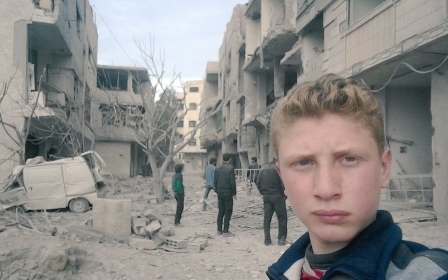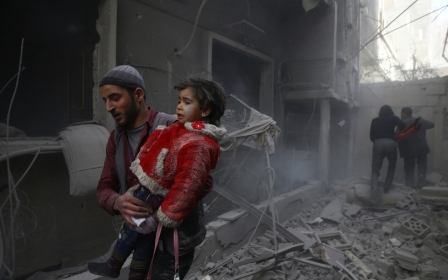First aid convoy of the year reaches Eastern Ghouta after days of Russian air strikes

An aid convoy carrying food and medical supplies for more than 7,000 people reached Eastern Ghouta on Wednesday after days of continuous Russian and Syrian bombing killed 277 residents.
The nine-truck shipment is the first to reach Eastern Ghouta this year, follows pressure from the UN and other major aid agencies on the Syrian government to allow the convoy through.
The last aid to enter the area which has been under siege in 2013 arrived in November. That month, the UN reported that nearly 12 percent of children under five in Eastern Ghouta suffered from malnutrition, the highest rate recorded since the start of the war.
The Syrian Red Crescent and United Nations confirmed on Wednesday that its aid shipments had come through.
Videos showed UN-labelled jeeps and trucks belonging to the Syrian Red crescent driving to the Damascus suburb where almost 400,000 civilians live under siege.
The relief items included some 1.8 million tonnes of medical supplies from the World Health Organization (WHO), its representative in Syria Elizabeth Hoff told Reuters.
The medical supplies are enough to provide 10,000 different treatments, and include antibiotics, dialysis equipment, insulin, trauma and pneumonia kits and hospitals beds, she said.
Hoff said that there was no news regarding more than 700 patients who await medical evacuation from eastern Ghouta. The UN health agency has been seeking government approval to pull the sick residents out for months.
Aid access has improved very little since the area became part of four 'de-escalation zones' brokered by Iran, Russia and Turkey last year, although the UN has been able to deliver assistance sporadically.
While the zone initially brought some calm, violence has increased steadily in recent weeks, with government air strikes and artillery fire killing hundreds in recent days, according to Syrian Observatory for Human Rights.
Reuters contributed to this report.
Middle East Eye propose une couverture et une analyse indépendantes et incomparables du Moyen-Orient, de l’Afrique du Nord et d’autres régions du monde. Pour en savoir plus sur la reprise de ce contenu et les frais qui s’appliquent, veuillez remplir ce formulaire [en anglais]. Pour en savoir plus sur MEE, cliquez ici [en anglais].




